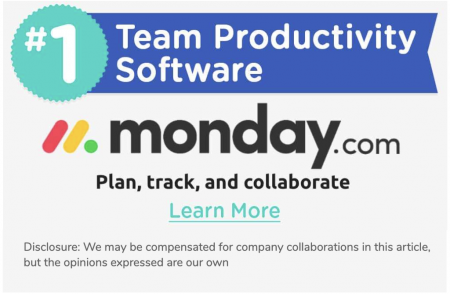
Do you understand the administrative job title hierarchy?
Even people who have been in the administrative field for years may find its complex web of job titles, organizational structures, and varied responsibilities a bit confusing at times. Experienced admins may find themselves asking questions, such as:
- What different things do Administrative Officers and Administrative Supervisors typically do? (Officers usually manage processes while Supervisors manage processes but also other employees.)
- What’s the difference between an Office Administrator and an Office Manager?
- Is an Executive Administrator an executive-level administrator or someone who administers to executives? (They usually administer to executives.)
(PS – Get more sh*t done with The Assist — the #1 free weekly newsletter made for assistants by assistants.)
The questions go on and on. Eventually, the mysterious scheme of administrative job titles might lead professionals to question where their own titles fit in the overall landscape. A similar dilemma might puzzle job hunters who are wondering which administrative job titles to target in their career searches.

Let’s clarify the administrative job title hierarchy! Here’s everything you need to know to understand the different levels of admin titles and also interpret what the titles mean.
A note before we start: The job titles, responsibilities, and expectations we cover below might appear under multiple levels. For example, an Office Manager could be an entry-level position at one company and a high-level position at a different company that has more demanding office needs. Additionally, please note that this list covers many, but certainly not all, administrative job titles you’ll encounter.
Entry-Level Administrative Job Titles

- Office Coordinator
- Office Administrator
- Office Assistant
- Office Manager
- Office Clerk
- Front-Desk Assistant
- Data Entry Clerk
- Data Entry Specialist
- Department Coordinator
- Administrative Coordinator
- Administrative Assistant
- Administrative Services Assistant
- Administrative Aide
- Administrative Associate
- Administrator
- Junior Administrative Assistant
- Events Administrator
- Receptionist
- File Clerk
- Personal Assistant
Entry-level administrator job responsibilities
Entry-level administrators usually do a little bit of everything. They might have one slow day of organizing files and preparing documents and then come to work the following day to find an inbox full of varied requests from staff members all around the office.
Employees look to their administrators for any kind of support they need at any given time. People in these positions complete all need-to-do items around the office, helping employees do their best work and keeping the office operating as smoothly as possible.
Any entry-level administrator will probably find themselves:
- Managing office communications—fielding organizational phone calls, emails, and traditional mail
- Maintaining office services, including IT resources and facilities (This includes fielding technical questions and service requests.)
- Collaborating across departments to help plan events and initiatives
- Coordinating travel plans, making itineraries, and completing bookings
- Scheduling and managing calendars
- Maintaining contact lists
- Keeping the office filing system in order
- Representing office interests in relationships with external associates, including vendors, consultants, and clients
- Creating invoices
- Tracking and ordering office supplies
- Providing office snacks and other perks
- Providing as-needed support to directors, managers, and executives
- Keeping shared office spaces organized
- Handling incoming and outgoing packages and mail
To adequately handle that diverse list of responsibilities, entry-level administrators are usually expected to:
- Recognize and respond to potential problems
- Take initiative to solve problems independently and creatively (To be as effective as possible, entry-level administrators need to be able to make decisions and deal with issues without requiring input from anyone else.)
- Effectively and respectfully communicate with internal and external stakeholders in a variety of different formats
- Strategically manage time
- Multitask and quickly shift tasks to complete a variety of menial duties without letting anything fall through the cracks
- Organize and process information while also keeping track of physical items and projects to maximize productivity
- Maintain composure when things go wrong
- Be prompt and prepared at all times
- Remember key details as multiple people make verbal, hand-written, and emailed requests throughout the day
- Work quickly, but accurately
Mid-Level Administrative Job Titles

- Administrative Assistant
- Office Manager
- Executive Assistant
- Operations Manager
- Administrative Services Manager
- Administrative Support Manager
- Administrative Support Specialist
- Events Administrator
- Personal Assistant
- Service Administrator
- Travel Coordinator
- Administrative Specialist
- Executive Administrative Assistant
- Executive Secretary
- Business Manager
- Business Administrator
- Facilities Manager
- Administrative Technician
- Staff Assistant
- Scheduler
- Unit Assistant
Mid-level administrator job responsibilities
Like entry-level administrators, mid-level administrators do a little bit of everything. (What can we say; it seems to be a hallmark of the administrative field.) However, unlike entry-level administrators, mid-level administrators usually do slightly fewer, but far more specialized tasks, such as handling payroll. Mid-level admins will also commonly be called to participate in large mission-driven company projects, including company culture initiatives, employee reward programs, and strategic rebrandings.
Additionally, once administrators have moved from the entry level to the middle level, they’ll have built up enough experience to design and implement their own policies to improve company operations.
Any mid-level administrator will probably find themselves:
- Implementing office policies and strategizing improvements to existing processes
- Developing initiatives related to company culture and employee wellness
- Implementing critical safety procedures, including establishing evacuation plans, running drills, and setting up building security
- Handling payroll
- Planning office design and layout improvements
- Onboarding and offboarding new employees
- Managing operations tasks, including handling employee reward perks, parking, and building maintenance
- Directly assisting executives
- Planning events and meetings
- Coordinating travel
- Scheduling and managing calendars
- Creating reports and sometimes presenting them
- Overseeing other office support staff members
- Keeping books and records
- Owning invoicing processes
- Determining company’s information organization and architecture
- Interfacing with clients, vendors, building management, and employees on a regular basis
- Running major office projects, such as renovations, installations, and office design initiatives
- Managing office budget and financial administration, from handling expenses to implementing processes
- Negotiating and tracking contracts
- Hearing (and resolves issues related to) complaints
- Resolving employee conflicts

To adequately handle that diverse list of responsibilities, mid-level administrators are usually expected to:
- Independently develop viable solutions to problems as they arise
- Leverage all the tools of the trade to improve and reinforce processes
- Think strategically and provide executives with sound big-picture guidance
- Gracefully handle pressure to remain a constantly reliable resource to management
- Prioritize work in ways that align with the company mission
- Use discretion at all times to be a trustworthy keeper of confidential information
- Effectively convey messages to a variety of different audiences in a variety of different formats
- Negotiate and network to build advantageous and fulfilling connections
- Leverage emotional intelligence to work harmoniously and effectively with others
- Apply analytics skills to inform key business decisions
- Understand and interpret complex information related to both abstract (relationships) and technical (inventory management) office responsibilities
- Adapt to changing demands and responsibilities
- Lead others and delegate tasks
- Guide projects and workflows from initiation to completion
- Catch details both big and small
- Listen, encourage, and occasionally provide workplace “therapy”
(PS – Get more sh*t done with The Assist — the #1 free weekly newsletter made for assistants by assistants.)
High-Level Administrative Job Titles

- Office Manager
- Executive Assistant
- Senior Executive Assistant
- Senior Personal Assistant
- Chief Administrative Officer
- Director of Administration
- Director of Administrative Services
- Chief Operating Officer
- Operations Director
- Senior Receptionist
- Community Liaison
- Chief Happiness Officer
- Chief People Officer
High-level administrator job responsibilities
Like other administrators, high-level administrators do it all from time to time. However, In high-level positions, the focus we started seeing around the mid-level gets even deeper. High-level administrators usually spend more of their time working with specific executives or working on business processes. Seasoned administrators will spend most of their time ensuring the success of their focus area and far less time attending to piecemeal problems, minor emergencies, and other small-scale administrative tasks.
Any high-level administrator will probably find themselves:
- Serving as chief collaborator around the office
- Being the sole liaison across disparate office teams during the development and execution of company-wide initiatives, policies, and processes
- Facilitating and even leading new business initiatives and strategic projects
- Consulting to improve operations and workflows for entire departments
- Performing a variety of strategic Human Resource functions related to employee hiring, retention, and policy development
- Managing other department heads and managers
- Determining how to best use company resources
- Keeping company stakeholders informed on key updates and developments
- Managing and guiding the entire administrative support team and often other teams as well
- Setting goals for the entire company and individual teams
- Overseeing all things related to daily operations
- Pursuing business development opportunities
- Maintaining key external strategic business relationships
- Serving at second-in-command to key executives and taking in a myriad of responsibilities within that capacity
To adequately handle that diverse list of responsibilities, mid-level administrators are usually expected to:
- Have years of experience and proven successes in an administrative or managerial capacity
- Demonstrate strategic and critical thinking skills that rival those of the executives they serve
- Possess a supernatural eye for detail; these people remember everyone’s name, every due date, and every key point about policies and processes
- Communicate with anyone and everyone to get results
- Manipulate their time until it seems like they have more hours in a day
- Demonstrate an investor-level commitment to the company mission
- Have a knack for improving processes and managing workflows in a way that promotes efficiency as well as goodwill
- Be well liked and respected by employee of all levels and in all departments
- Take ownership of all outcomes, even those not directly touching daily work
(PS – Get more sh*t done with The Assist — the #1 free weekly newsletter made for assistants by assistants.)
If you’re in the administrative field (especially if you’re browsing jobs), we’re sure you’ve come across your fair share of administrative job titles. We would love your intel on the administrative job title hierarchy. Let us know which titles we’ve missed and share your insights below!
Special thanks to O*NET OnLine, sponsored by the U.S. Department of Labor, for keeping an amazing database of employment information.








